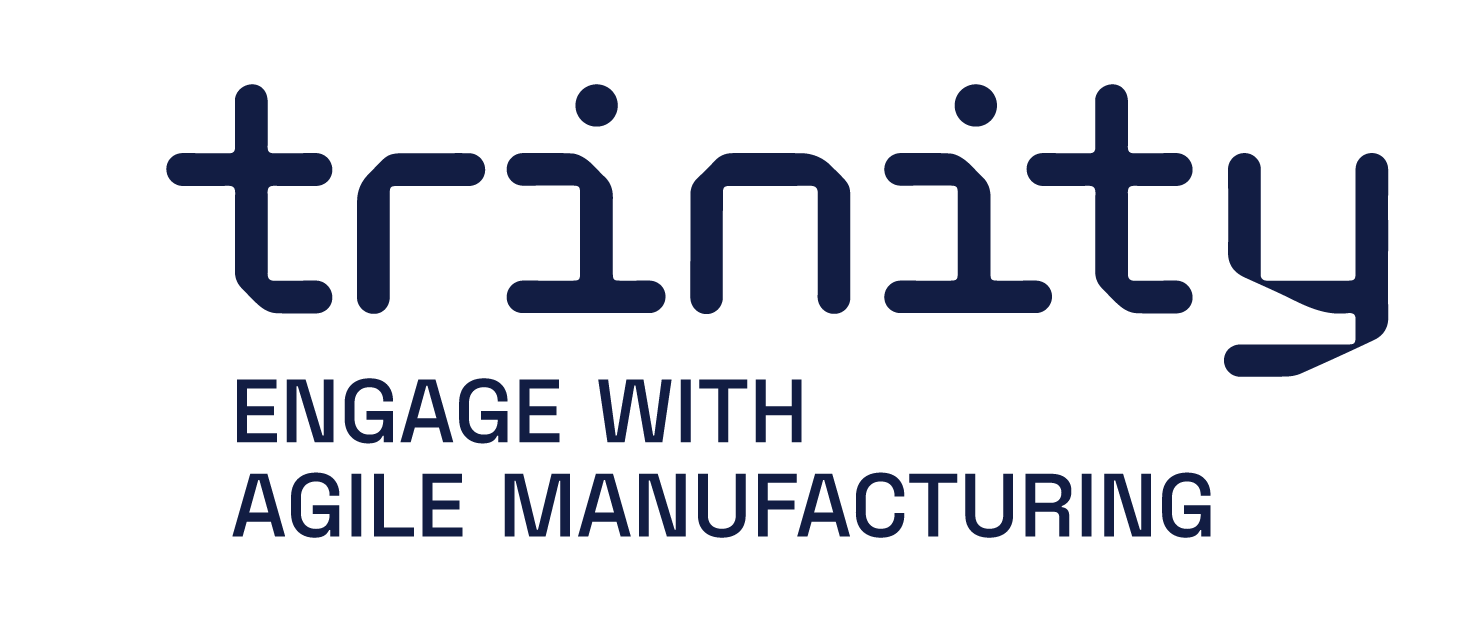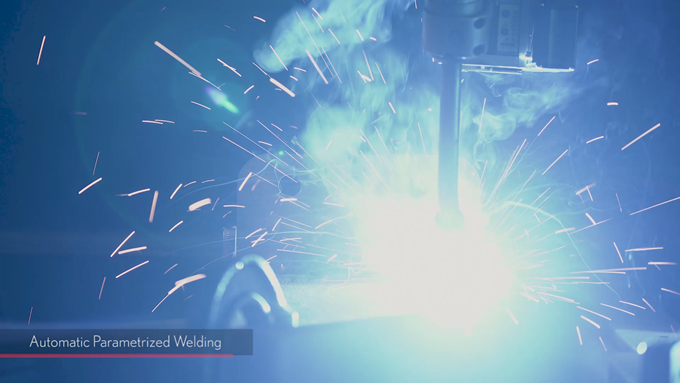X-WELD
Name of demonstration
X-WELD
Main objective
Significant reduction in both the required programming and cycle times of standardized robotic cells with large economic impacts in companies with small batch sizes.
Short description
The objective of X-WELD is the development of a complete automated system for robotized welding through the combination of advanced (collision free) offline programming, with advanced sensing for part localization and robot calibration.
This demonstration has received funding from the European Union’s Horizon 2020 research and innovation programme under grant agreement No 825196.
Owner of the demonstrator
SARKKIS Robotics
Responsible person
Dr. Pedro Tavares, SARKKIS Head of R&D, pedro.tavares@sarkkis.com
NACE
C28.9 - Manufacture of other special-purpose machinery
Keywords
Robotics, Machine Vision, Welding, SME.
Benefits for the users
Benefit 1 – Massification of robotic welding: In terms of impact on the robotics community, X-WELD represents a major milestone in terms of automatic welding programming. The combination of state-of-the-art offline programming, automatic path planning and advanced perception in a representative and standard welding robotic cell, will open great perspectives to the massification of the offline programming systems on welding.
Benefit 2 – Increase of robotic work cell uptime: The application of this concept to new pilots is a technological leap as it will enable the increase of robotic work cell uptime and reduce the operational cost through material waste and preparation / setup times reduction. Overall, the development and conclusion of X-WELD is an industrial advantage for companies using robotic system, both in terms of technological upgrade and also regarding the positive economic impact the proposed solution carries.
Benefit 3 – Gender equality and responsible production: At last, the consortium has been able to motivate for the usage of robotics promoting improvements to both gender equality and responsible production.
The optimization algorithms consider in the project lead to the reduction in power and material consumption, reducing consequently, the damage to the environment which is align with the concept of responsible production. Then, X-WELD can contribute to the Gender equality by the promotion of the use of robotics in welding applications. The extensive use of robotics for welding will make the shopfloor work more attractive, especially for skilled workers, and therefore indirectly promote the influx of women to these sectors, that are heavily dominated by men. Furthermore, the consortium solution for robotic cells is an example of how the combination of robotized welding, for the repetitive and dull tasks, with the skills of workers can be part of the future for jobs in the developed countries.
Innovation
X-WELD project has developed some important outputs for the industrial robotic community. The complete bundle aims to be used in multiple workstations allowing for a deeper reduction in programming time of the robotic system and also in an increase of efficiency due to reduction of wasted material and dynamic welding path correction due to sensing. There was no complete solution like this in the market.
Asset 1: The first relevant contribution is the Collision-free Off-line Programming with Interfaces for Advanced 3D sensing. This software is able to read 3D geometrical file such as STEP, IGS, STL and automatically generated welding candidates and consequent vectors that are key to validate the part completion and to generate robotic postures. From there, a clean integration with sensors is consider to retrieve data regard part localization. This serves as a software optimizer as this information allows to complete a digital model of the workstation and generate the complete operation accordingly in a safe manner.
Asset 2: Then, the usage of active perception and sensor fusion allows the system to cope with part geometry imperfections such as bends or warps. The development of the correct pipeline allows to gather information, filter it and obtain correct measurements on the local welding joint. Despite the change of camera 3D sensor to laser-line sensor at the end of the project, this pipeline proves useful due to its robustness for future works where the 3D sensor can ensure better precision and accuracy. Regarding the local sensing obtained from laser-line sensor, the work put on this methodology allowed the consortium to proposed a dynamic approach that detects misreading and automatically re-parametrize the sensor to overcome the most common issues find in industrial shop-floor related to part preparation, material deformation or even lighting.
Asset 3: At last, the global perception of the workstation is a fundamentally important output of the project. The development of new sensing pipelines for parts detection and then robot accuracy correction, the consortium is able to overcome two of the more limitative conditions in robotic systems
Risks and limitations
Risk 1 - Sensing: As a complete product, X-WELD proposes a bundle of software and hardware that is flexible to be applied to most industrial scenarios due to its flexibility. The risk is only related to the perception conditions. The 3D sensor requires lighting conditions that ensure part measurement. To cope with this added difficulty it may be require additional lighting. Risk 2 – COVID-19: The current pandemic situation has imposed some restraints. In particular, dissemination activities have been put on hold and the overall landscape has changed. However, new paradigms have surge considering, as an example, online tools. The risk has also significative reduce due to current vaccination status.
Technology readiness level
7 - System model in operational environment
Sectors of application
Industrial robots are a mature technology, but the full potential applications are still unexplored. This is clear by observing the current collaborative robots phenomena, and also by comparing the numbers of industrial robots against, for example, machining equipment. The market potential is very significant. Robotic integrators state that up to 70% of their robot sales fill in the scope of the standard robotic cells. Considering that the annual shipment of industrial robots for welding peaked in 2018 to 818003 units, a conservative estimate of 35% of the market results in more than 28000 robotics systems with the potential to integrate the X-Weld solution., STEEL INDUSTRY: This demonstrator is focus on the steel industry, namely welding of structural components. It has been validated in a steel manufacturing SME, where the focus is to weld separate parts ensuring stability and robustness to structural parts..
Potential sectors of application
This demonstrator can be applied to multiple area of applications. The flexibility associated to the X-WELD solution enables the automatic welding parametrization and robot control. The sensors parameters may need to be change considering different materials and exposures. However, the development has considered facility adaptation that enables the overall solution to be resistant to these pitfalls. From the number of application areas that may benefit from this solution we can list the following: AGRICULTURE: machinery for agriculture. ENERGY: welding of energy components such as containers. AEROSPACE: welding of aerospace parts such as propellers or wings. OTHERS: any area of application that requires non-structured welding.
Hardware / Software
Hardware:
Photoneo L
Wenglor Laser-Line
Robotic system integrated with welding machine
Software:
X-WELD software
Easy Programming Module
The main goal of this module is to allow the easy and fast implementation of a new robotic application. In ...
LEARN MORE
Online Trajectory Generation with 3D camera for industrial robot
this module provides depth-based real-time information of workspace for generating dynamic trajectories for...
LEARN MORE
Remote Control Of Industrial Robots
The module offers a method to control a general industrial robot remotely. This module offers a robot contr...
LEARN MORE
Robot trajectory generation based on digital design content
Speeding up robot simulation and programming: by using data from digital design data, such as Building Info...
LEARN MORE
Simulation welding
The main functionality of the module is to use a simulation software to program a welding path by creating ...
LEARN MORE
Trainings
To learn more about the solution, click on the link below to access the training on the Moodle platform
Planning, Accuracy and 3D sensing for full automation robotic welding

